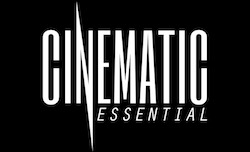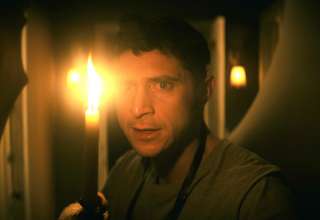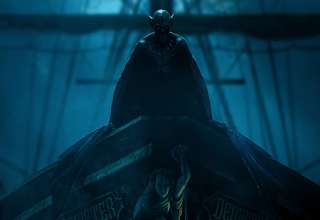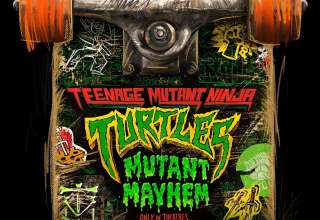Blade Runner (The Final Cut) is an odd one for me because while I didn’t love it, it stayed on my mind after I saw it. Aside from its looks, I guess the reason for that is due to me believing that it could have been much better than it actually is. That’s kind of how I feel about Blade Runner 2049. Like the movie that preceded it, this a solid movie, but it could have done a few things to turn it into something that could legitimately be considered the masterpiece that some will claim that it is.
This 2017 sequel to the 1982 film starts with LAPD Officer K (Ryan Gosling) on what looks like his usual case. Once he gets back from this job, he realizes that he has uncovered a series of secrets that will shake society to its core. In order to answer the questions that have arisen due to this discovery, the persistent blade runner decides to go against the orders given to him. This choice and his effort lead him into a world of new sorts of danger as he begins a quest that requires him to locate Rick Deckard (Harrison Ford), a former blade runner who disappeared thirty years earlier.
Blade Runner 2049 is slow and is simply too long. Neither one of those comes as much of a surprise since the original one also suffered from those same two problems. It also was kind of expected due to the fact that Denis Villeneuve is known for making movies that are slow-moving. When you look at his style, it actually made him an obvious choice when it came to directing this sequel.
While known for his wide shots and slow-moving pictures, Villeneuve is also known for excellent camera work that allows for some beautiful work from the likes of cinematographer Roger Deakins. Like in the past, their work together has proven to be effective once again as we’re handed a film that’s marvelous to lay eyes on. With this being as slow as it is, it’s important to give the audience something to do as we sit and wait for the story to unfold. That’s where the visuals step in and allows our brains to stay active and interested.
Much like it’s predecessor, in spite of its beauty, Blade Runner 2049 would have benefited from a faster approach. Yeah, it’s certainly a fine movie that’s well put together in terms of visuals and story, but there’s simply no need for things to be this sluggish and drawn out. This doesn’t stop me from liking much of what I saw during this two hours and forty-four minutes of film work, but it did prevent me from seeing this as a lovable feature film.
That’s essentially the same issue that I had while watching the original Blade Runner. The look and the ideas are great, but the execution could have and should have been better. The universe in which the blade runners and replicants live isn’t just worth looking at. This is a place that’s worth exploring and learning about as well. Instead of doing that, we’re always kept at arm’s length since we never get to find out more about the actual world, people and planets that exist within this fictional universe.
Not only do we not get to know about how this place actually works, we don’t get to be around many of the featured characters all that much either. If you’re watching this to see Harrison Ford, Jared Leto or anyone else outside of Ryan Gosling, you’re going to be disappointed to an extent. As you’ll see, the movie follows its protagonist intently while rarely ever letting him move away from the front of the camera. Luckily, he does a fine job in the role, but will surely be expecting more screen time for at least a couple of the other characters who are being promoted.
Including Gosling’s Officer K, we’re only offered the bare minimum when it comes to finding out who any of these guys actually are. In fact, we only find out as much as we need to know about the characters in order to push the story forward. Everything else about them remains a mystery to us for the most part. This is also an aspect of the film that restricts it from being all that it could have been. Digging further into how things work (probably not possible if applying logic) and who these characters are could have allowed us to become more involved with what’s taking place.
Another thing that I do like about Blade Runner 2049 is how it connects to its predecessor. Whoever came up with the idea for this story clearly put some serious thought into it and was smart enough to use some aspects of the first movie that went completely unexplored all these years. Taking this and turning it into the catalyst for everything that we see here was brilliant. I say that because it connects the two films while also creating something that is completely independent from the original.
This allows for 2049 to feel fresh while existing in the same world and ultimately having the same style. They were able to successfully build on something that was already created ages ago. And they didn’t simply do this making everything bigger and utilizing more advanced technology that didn’t exist when the first movie was made. Here, they developed the world that we see and made it feel like this was a naturally growing place that these characters are moving around in.
Because of all of this, we get something that stands on its own in spite of the fact that it’s unable to stand by itself. That sounds odd, but it’ll make sense once you watch it for yourself. It’s because stuff like this that Blade Runner 2049 will likely be regarded as a good picture at the very least. While some will likely consider it to be a “masterpiece,” it certainly doesn’t reach that level. Then again, it’s impossible for me to see the original film that way either. I guess people who loved that one will feel that way about this one.
Rating: R
Director: Denis Villeneuve
Cast:
Ryan Gosling
Harrison Ford
Ana de Armas
Sylvia Hoeks
Robin Wright
Mackenzie Davis
Carla Juri
Lennie James
Dave Bautista
Jared Leto
Film Length: 164 minutes
Release Date: October 6, 2017
Distributor: Warner Bros. Pictures
- Score - 7/107/10






















